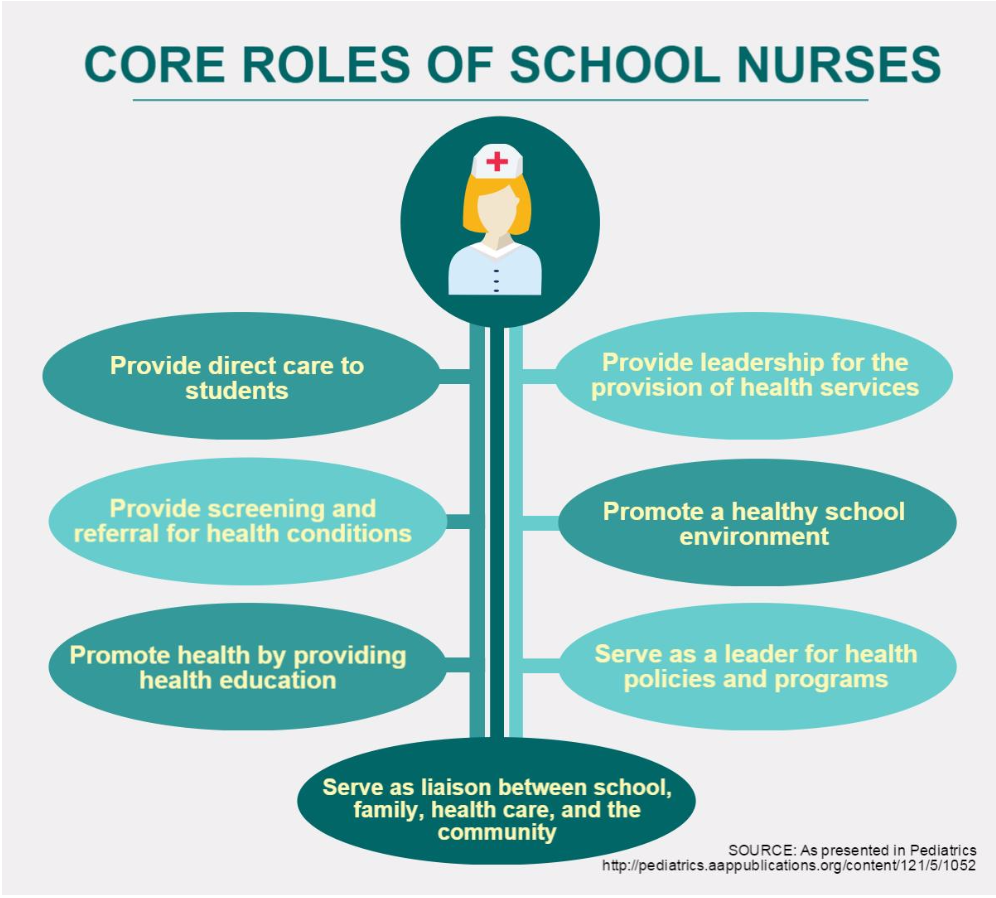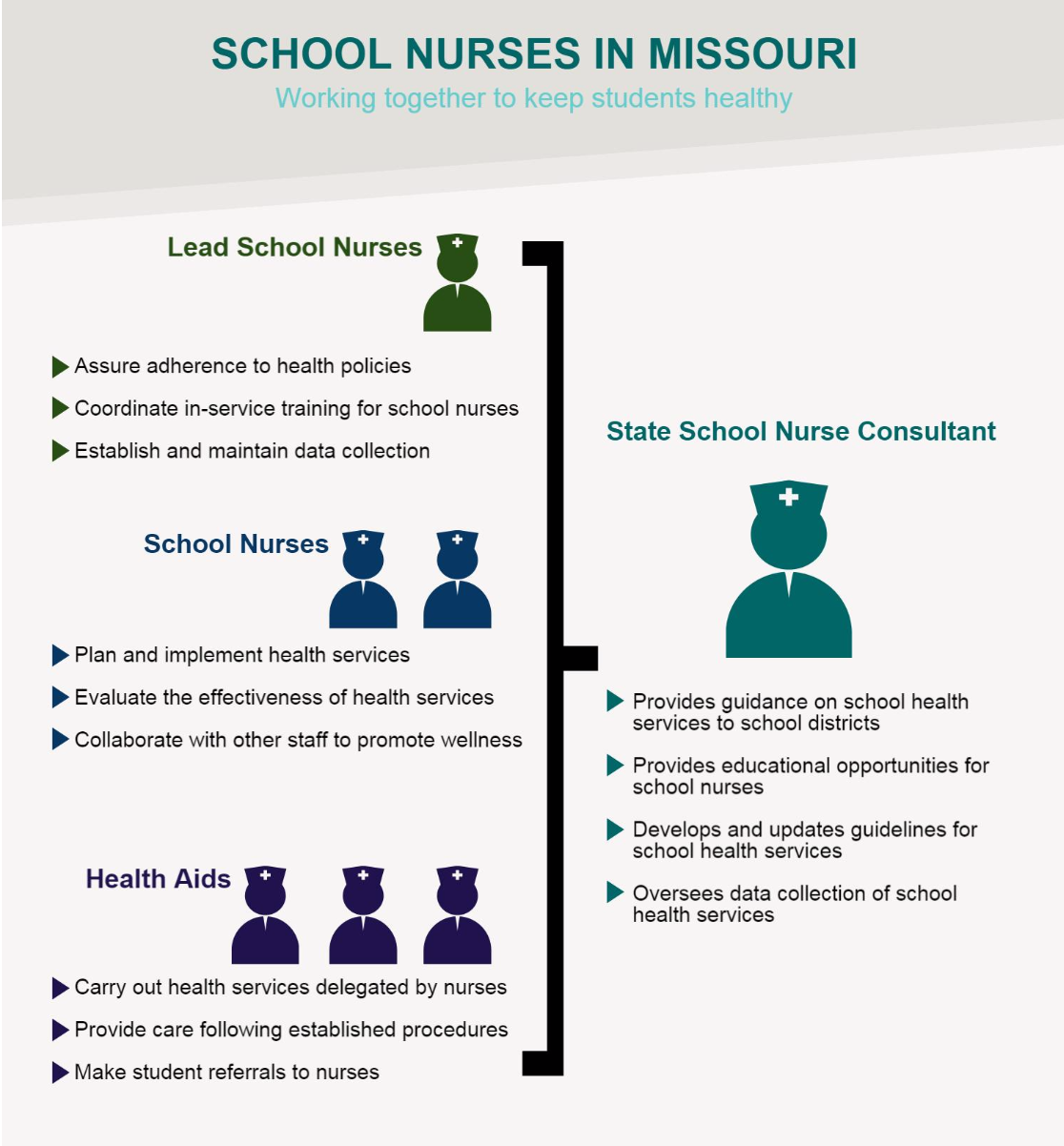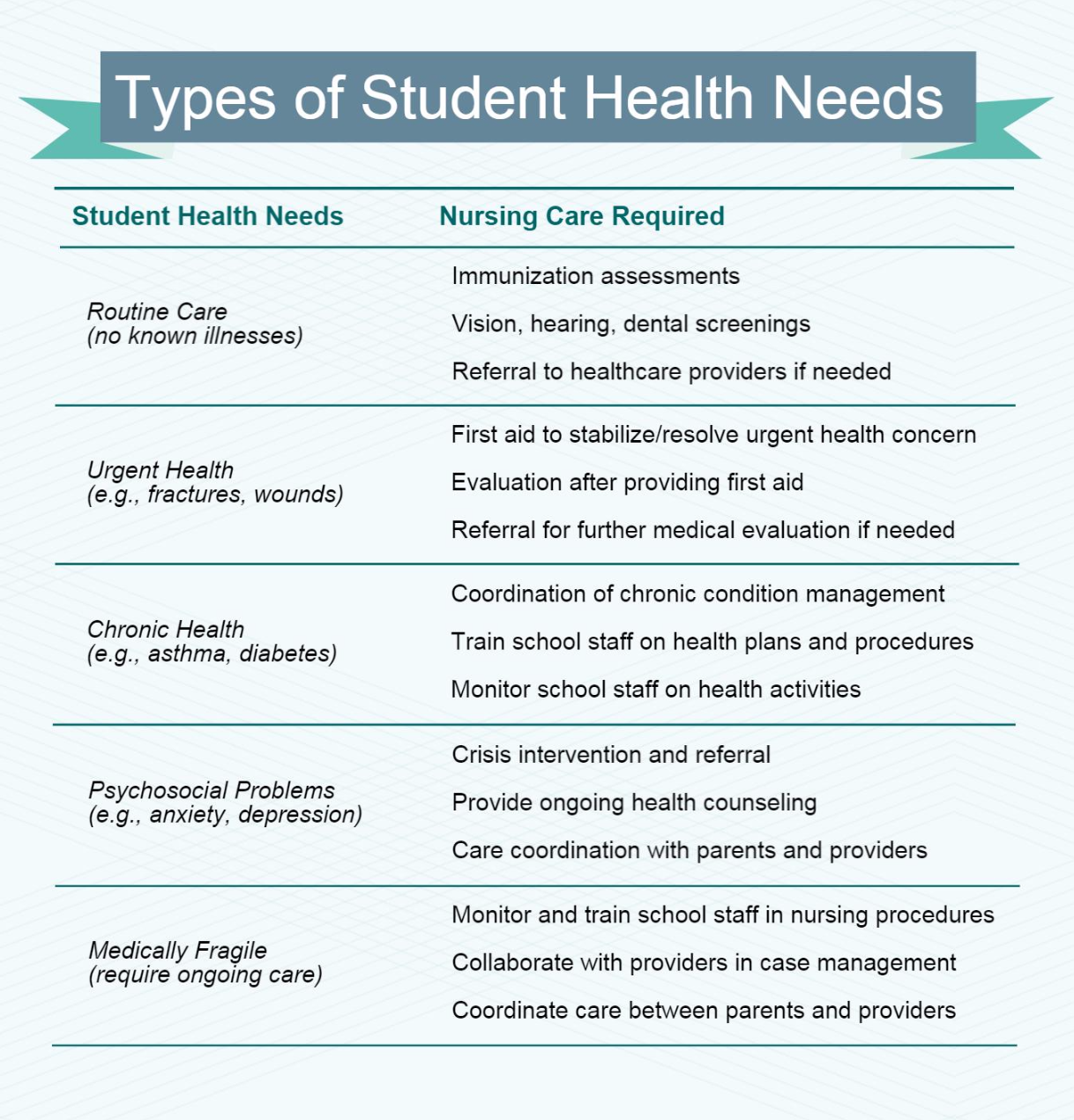School Nurses: A long history of caring for our children
“School nursing is a varying combination of what an administrator wants, teachers expect, students need, parents demand, the community is accustomed to, the situation requires, and what the nurse herself believes”— Catherine Gair, School Nurse.
Highlights
School nurses are instrumental in leading and coordinating school efforts to keep our children healthy. Missouri KIDS COUNT wants to recognize the hard work and dedication of school nurses through a series of three articles. We hope that by presenting information on all that school nurses do, we can encourage others to support their efforts to keep our children, schools, and communities healthy.
The purpose of this first article is to provide general background about school nursing in order to set the stage for upcoming articles that are specific to school nurses in Missouri.
History
School nursing originated in the late 1800s. Originally, school nurses were responsible for providing inspections to identify students with communicable diseases in need of treatment.1
As medical and technological advances were made in the U.S., more children survived prematurity, congenital anomalies, and birth trauma. As result, the number of children with special health care needs and medically complex care increased.
Laws were enacted in response to these ongoing demographic changes, including:
These legislative changes allowed more medically fragile children to attend public school. School nurses had to learn to adapt quickly in order to keep up with the growing health needs of the student population.
Students with chronic health conditions have health needs that need to be met before they can be ready to learn—school nurses are responsible for reducing barriers to learning by coordinating care, training school staff in providing the care needed, and monitoring health activities.
In the next feature article, we will present information about specific chronic conditions that school nurses help to manage as well as special health care procedures they provide at public schools in Missouri.
Roles and Responsibilities
The National Association of School Nurses defines school nursing as2:
A specialized practice of professional nursing that advances the well-being, academic success and life-long achievement and health of students. To that end, school nurses facilitate positive student responses to normal development; promote health and safety including a healthy environment; intervene with actual and potential health problems; provide case management services; and actively collaborate with others to build student and family capacity for adaptation, self-management, self-advocacy, and learning.
The National Association of School Nurses has also identified seven core roles that school nurses fulfill in order to foster child health and success.

Although the range of school health services provided and nurse activities vary by school district, according to the American Academy of Pediatrics3, schools should at minimum provide:
The National Association of School Nurses and the American Academy of Pediatrics have provided some definitions as to the roles and responsibilities of school nurses. However, as we will present in our next articles, school nurses are frequently involved in activities that go beyond their role as a healthcare professional.
Types of School Nurses
No federal or state laws specify the academic preparation and training needed for school nurses in Missouri. The National Association of School Nurses recommends that the minimum qualification for the professional school nurse should include licensure as a registered nurse and a bachelor’s degree from and accredited college or university.3
In Missouri, the title school nurse may be used by registered nurses (RNs) licensed in the state of Missouri as well as licensed practical nurses (LPNs) working under the direction of a RN or medical doctor.
Not all school nurses have the same responsibilities. The figure below describes the responsibilities and relationships among different types of school nurses in Missouri.

It is important to note that public schools in Missouri are not required by law to have a school nurse on site. Given that the salary of a school nurse is supported by local revenue, hiring a school nurse is a decision at the community level. It is not uncommon, particularly in rural areas, for a single school nurse to provide health services at multiple schools.
Student Health Needs
The main goal of school nurses is to reduce health related barriers to learning. The ways in which school nurses accomplish this, however, vary on the unique health needs of each student. Some of the different types of student health needs are presented in the table below along with the specific care that school nurses provide or delegate to other school staff.

School nurses put great effort into developing, monitoring, and evaluating individual healthcare plans that address student unique needs.
The impact of having a nurse at school goes beyond improving health. According to the National Association of School Nurses4, having a nurse in school can also be beneficial for:
Summary
As the title of this article suggests, nurses have long been on the front lines providing healthcare and health education to our children in schools and communities. School nurses represent a unique nursing specialty because they practice in a non-healthcare setting every day. School nurses are often the lone healthcare provider practicing independently in an education institution, sometimes without the benefit of policies and protocols to guide their professional expectations as nurses.
Many of us have memories of the school nurse caring for our scrapes and bruises, providing that gentle touch of healing. But nursing in schools has changed radically in the last few decades because of the complexity of medical conditions of children in school, the diversity of children, and the number of children living in poverty. Is not an uncommon sight to find children with cancer, diabetes, serious asthma, ADHD, in class with children with ear infections, upset stomachs, hearing disorders—all of which would find their way to the school nurse. Children coming to school with complex medications to be administered during the school day are also an increasing challenge for the school nurse. And layered on these health conditions are the non-medical vital signs of hunger, homelessness, abuse and neglect. School nurses are indeed on the front lines of child health like no other healthcare provider.
Coming Up Next
Given the importance of sharing the real story of school nurses, Missouri KIDS COUNT will focus our readers’ attention on school nurses in the next two feature articles. The upcoming article will lift up data that school nurses have reported to the Missouri Department of Health for the past 10 years. Until now, this data has not been used to inform the public about the special health needs that nurses manage in schools each day. We will also share stories from school nurses around the state that we hope will change our readers’ perceptions about the importance of health in child education.
Stay tuned for the next feature article.
Resources to learn more about school nurses
References
1. Selekman J. School Nursing: A Comprehensive Text.; 2012.
2. National Association of School Nurses. The Definition of School Nursing. 2010. http://www.nasn.org/rolecareer. Accessed October 27, 2015.
3. American Academy of Pediatrics Council on School Health. Role of the school nurse in providing school health services. Am Acad Pediatr. 2008;121(5):1052-1056. doi:10.1542/peds.2008-0382.
4. National Association of School Nurses. Five Ways a School Nurse Benefit the School. http://www.nasn.org/portals/0/about/fiveways.pdf. Accessed November 5, 2015.
Download the PDF of this article
November 17, 2015




